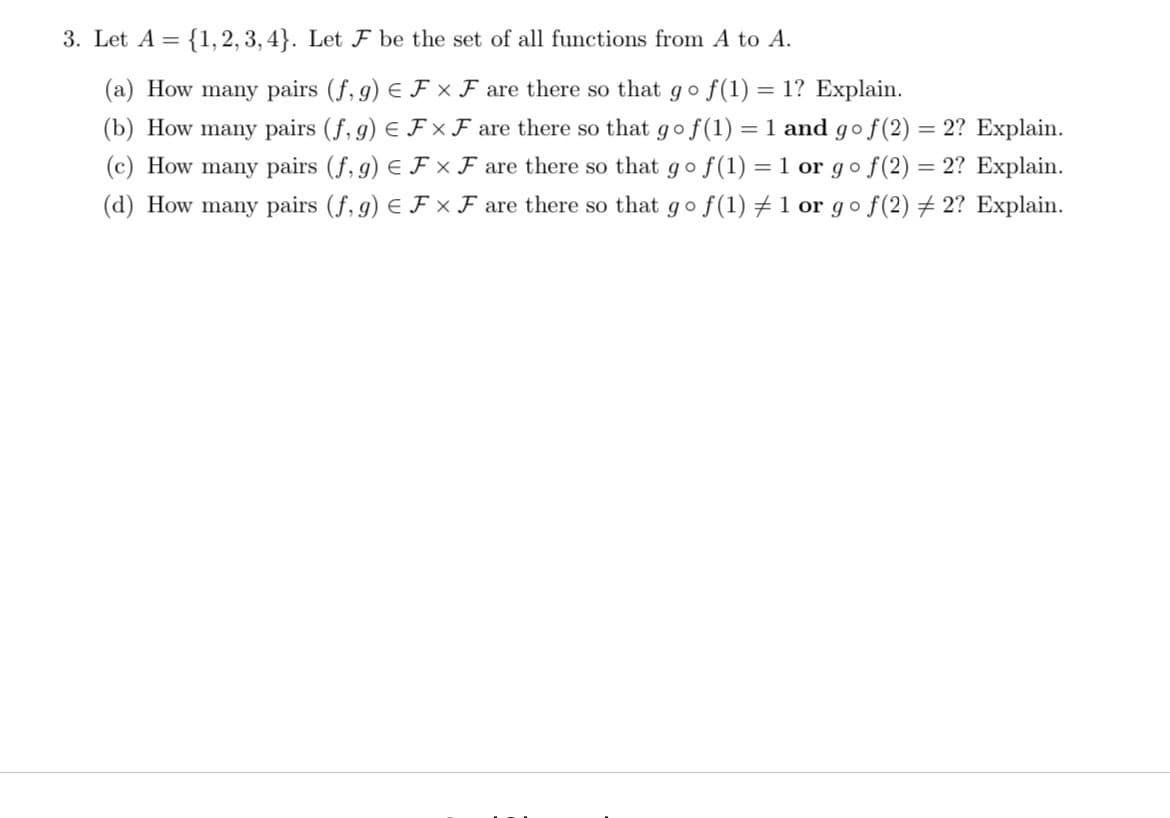(d) How many pairs (f, g) E F x F are there so that go f(1) #1 or go f(2) + 2? Explain.
(d) How many pairs (f, g) E F x F are there so that go f(1) #1 or go f(2) + 2? Explain.
Algebra & Trigonometry with Analytic Geometry
13th Edition
ISBN:9781133382119
Author:Swokowski
Publisher:Swokowski
Chapter3: Functions And Graphs
Section3.4: Definition Of Function
Problem 64E
Related questions
Question
How do you deal with part(d)

Transcribed Image Text:3. Let A = {1,2, 3, 4}. Let F be the set of all functions from A to A.
(a) How many pairs (f, g) E F × F are there so that go
f(1) = 1? Explain.
(b) How many pairs (f, g) E F × F are there so that gof(1) = 1 and go f(2)
(c) How many pairs (f, g) E F × F are there so that go f(1) = 1 or go f(2) = 2? Explain.
(d) How many pairs (f, g) E F x F are there so that go f(1) ±1 or go f(2) + 2? Explain.
2? Explain.
Expert Solution
This question has been solved!
Explore an expertly crafted, step-by-step solution for a thorough understanding of key concepts.
Step by step
Solved in 3 steps with 3 images

Recommended textbooks for you

Algebra & Trigonometry with Analytic Geometry
Algebra
ISBN:
9781133382119
Author:
Swokowski
Publisher:
Cengage

Algebra & Trigonometry with Analytic Geometry
Algebra
ISBN:
9781133382119
Author:
Swokowski
Publisher:
Cengage